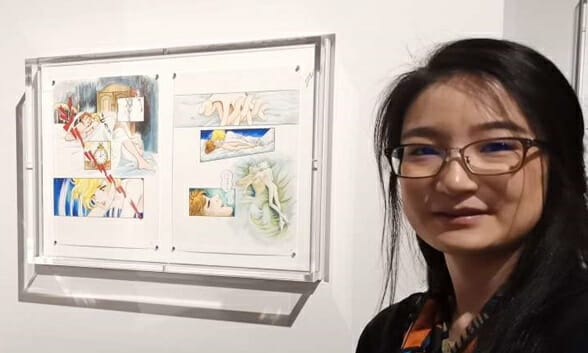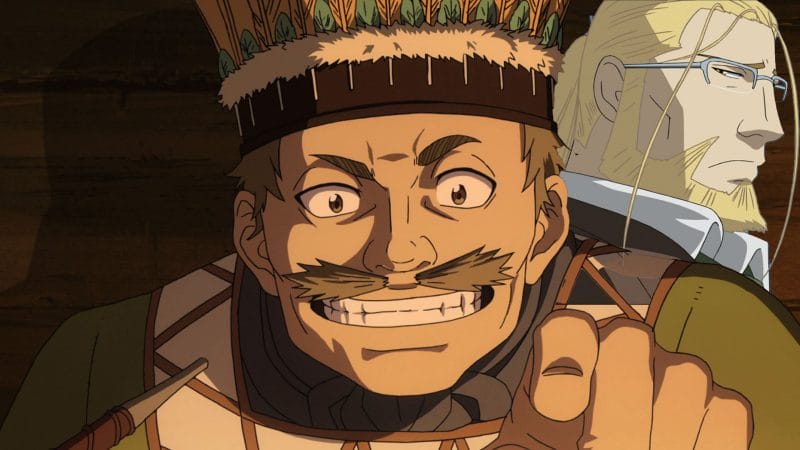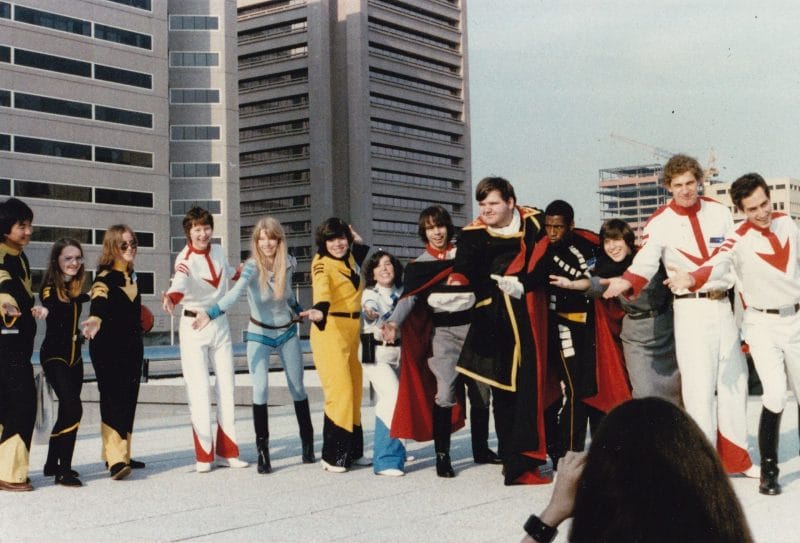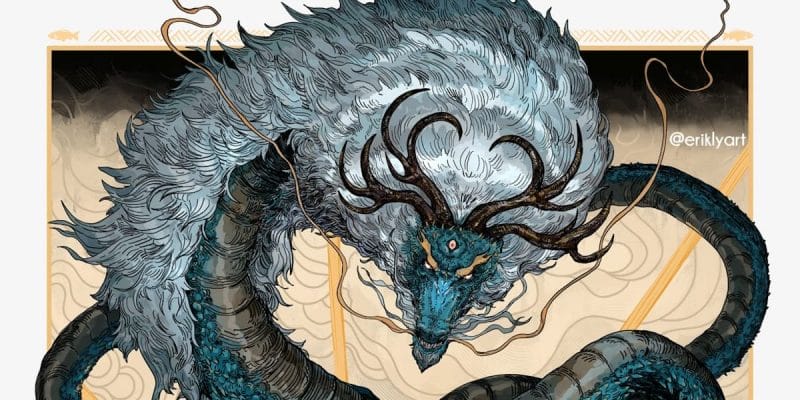Interview With Yao Zhao
Location: Email
Interview Date: 2/24/2020
University of Leeds’ PhD candidate Yao Zhao from China researches the Chinese and Anglophone manga and anime fandoms, with a particular focus on the boys’ love genre, under Professor Anna Madill. Manga and anime are two of Japan’s best known art expressions across the globe, and remain influential within Western mainstream culture.
 In an interview with Anime Herald, Zhao discusses her observations on the Chinese and Anglophone perceptions on these art forms, and how they differ from those found within Japan.
In an interview with Anime Herald, Zhao discusses her observations on the Chinese and Anglophone perceptions on these art forms, and how they differ from those found within Japan.
Anime Herald: How did your perspective, as a Chinese citizen lead you into this research? What sorts of differences come from researching this topic in the United Kingdom, versus in China?
Yao Zhao: I started to read different kinds of Japanese manga, yaoi fan arts, and yaoi original novels from around the time I was twelve years old, which was close to twenty years ago. That was very beginning [period] of Chinese original yaoi. That period was an essential time as to what Chinese internet popularized into general population for every group. The thriving development of Chinese yaoi has highly relied on the internet, by which the majority Chinese yaoi materials were online. Authors publish manga or fiction online, readers consume them online, fans create, communicate, or enjoy fan works online. Although both the Chinese and Japanese public seriously denounce the scanlation and piracy issues, there is no official and legal means of importing Japanese yaoi manga or fiction [into China]. Even Chinese yaoi fiction sees very few titles published formally.
However, that never stopped the prosperity of yaoi in China. Chinese yaoi culture has increasingly influenced the public and mainstream media. For example, many Chinese [yaoi titles have] been adapted into online TV drama, which achieved great successes. In 2018, Guardian earned an outstanding hit rate, drawing in more attention than the World Cup on social media. Furthermore, In 2019, The Untamed has become very popular, having been exported to Thailand, Korea, Japan and several other Asian countries.
According current Chinese regulations, rules, and laws, homoerotic content and descriptions of same-sex relationship contents are generally prohibited in mass media. The extreme popularity and huge economic benefits clash with the strong heteronormative mainstream cultural requirements, and seem to build a complex contradiction.
I experienced the essential changes in regards to how Chinese authorities regulated online yaoi materials. Thus, I hope I can have the opportunity to explore this intricate and unique phenomenon, and understand the individuals who engage or involve in this cultural practice.
Rather than researching in China, I did my research in the UK. It is clear that there is much less limitation regarding the research contents. When we designed and promoted the survey, I consulted bureaucrats in order to ensure that the survey contents fit into Chinese laws with regards to the questions about the erotic contents of yaoi. And during the time that I promoted the survey in a Chinese University, I had to explain it in detail to the lecturers and professors. I was only allowed to provide leaflets (only the QR-code and an introduction about the survey), to the students rather than the actual survey. The overall quality of yaoi research conducted in Mainland China has increased in recent years, though few are involved in erotic contents. Generally, Chinese mainstream culture and media acquiesce that the erotic content is problematic and negative.
In the UK, the general concern focuses more on the influence on individuals, such as safety issues or ethical issues, but not on the direction of research. There is also a much greater tolerance toward erotic materials. For example, in my survey, there are two sections about consuming erotic yaoi materials and general pornographic materials. Those questions might not be allowed in Chinese academic environments.
Anime Herald: What would you say are the core differences in behavior between Japanese, Chinese and Anglophone fandoms?
Yao Zhao: Compared with Japanese and Anglophone yaoi fandom, the most important difference of Chinese yaoi fandom is that there is no clear boundary between fans, audiences, and non-fans. Most Anglophone and Japanese fans have distinct sensations about what it means to be a fan or a non-fan, omring in-group, out-group identities for themselves. Chinese yaoi audiences showed much more flexible and fuzzy lines between being a fan or not.
The highly generalized and market success of Chinese yaoi were included in the list of potential reasons or this. Chinese Yaoi authors and audiences face serious checks and an extremely strong heteronormative culture. Due to issues cited as “safety issues,”, yaoi stories have muddled the elements about homo-romantic or sexual relationships. The more successful in general market yaoi story is, the fewer homosexual elements it maintains.
All released TV dramas must be approved by Chinese authorities. In order to pass the approval, producers have to make sure the content is deemed “safe” as possible. As result of inattentive checks, a wider and more general population became a large part of audience.
Anime Herald: How would you say that a culture, or even personal experience can influence the ways a reader (or spectator) absorb a given piece of material?
Yao Zhao: Clearly, the cultural and social environment shapes the readers and authors. On one hand, indeed, Chinese yaoi culture has developed successfully. In 2020, 59 yaoi novels will be and are being adapted into online TV dramas. To some degree, Chinese authorities seemed to increase the tolerance of homosexual romantic content, as well as content with a lesser patriarchal value.
On the other hand, the highly heteronormative yaoi novels possibly directly assisted the promotion of any non-heterosexual values within the media market. Although yaoi seems to be approved and popular in the mass media, only sanitized yaoi has been accepted. The top popular and profitable yaoi fiction, which highly fits into the mainstream values, would be identified as prototypes or the benchmarks. As a result, the queer meanings and variety of yaoi stories might be weakened. Either fan fiction or original yaoi fiction commonly highlights topics like marriage, family approval, pregnancy, or having a child in any fantasy way.
Regarding personal experiences, they become evident in personal preferences and interpretations. As my interview data showed, my own pattern of preference differed from that of most of my other interviewees. I have been immersed in western culture for nearly ten years, and I came from a very atypical Chinese family. I almost never read the yaoi stories about marriage or pregnancy which, are the most popular yaoi elements according to my survey data.
Furthermore, according to my experience and interviews, I found that once fans or audiences accept the yaoi fantasy of any couple, the similar points of views would be really easy to build upon any other pairings. In other words, even some outside audiences might stop to read or watch yaoi material, as the fantasy still easily appears in their mind. But this is only my personal feelings without any academic evidence.
Anime Herald: How would you say Chinese and Anglophone characters are portrayed in the greater manga / anime scene?
Yao Zhao: Chinese characters are quite common in Japanese manga and anime, though they’re commonly presented in a very stereotypical way. For example, the cheongsam dresses and ‘double bun’ hair style for female characters, from [Chun-Li in] Street Fighter (1991) etc. This appearance seems to be a very typical image of Chinese female characters. It is very interesting that this stereotypical image generally has been used in the story based on a context that exists without a clear national background.
Meanwhile, Japanese artists quite like Chinese stories and elements. For example The Three Kingdoms is the most popular theme that presents itself in in Japanese anime, manga, or games. The story has been adapted into different themes, like yaoi or yuri or just follows the original storyline, only the main characters have been changed into women ( ex: Koihime Musou).
Many Japanese artists can understand China and Chinese culture or history very well, such as the Chinese characters and their story found within in Fullmetal Alchemist. The series’ main plot involved looking for the Philosopher’s Stone because Edward and Alphonse’s emperor pursued living forever. They wanted to use the stone to ingratiate the emperor in order to protect their family and get the right of inheritance. This tale of an pursuing immortality is a very Chinese-style story.
As to Anglophone characters, it seems less stereotypical since most characters feature colorful eyes and hair, which shows fewer features of different races. For example, the characters with golden hair and blue eyes who may be Caucasian often are favored. They are not necessarily protagonists, but they’re generally very important for the story and with many popular elements from character setting To some degree, Japan indeed admires and prefers the West via idealized characters.
Similar to Chinese the background stories, there are also a large number of manga based on Western backgrounds. Japanese artists did very well in using manga and anime to express stories with any type or theme.
Anime Herald: China is known for having rigorous evaluations on what can be made public. How is manga and anime affected by that? Can you give us any examples?
Yao Zhao: In China, authorities maintain various and complex regulations regarding mass media. Particularly, pornographic and erotic materials are among the most common and important targets of media checking. There is no ranking system for all types of media materials within China.
In early times (before 2010), the various yaoi materials, erotic or non-erotic, were largely ignored by authorities because yaoi was very much a small, minority group culture . Back then (around 2010 ~ 2015), Chinese authorities paid little attention to yaoi materials; in recent years (2015~ now), regarding yaoi’s ever-growing popularity and increasing influente and profits, authorities has paid much more attention to the genre, focusing especially on its erotic contents.
There are extremely serious rules on pornographic materials, which maintains a very wide range of topics. As a result, almost all types and levels of erotic yaoi have been identified as pornography within China. The most extreme example was the case of Tianyi ‘, a Chinese female yaoi author, who self-published her own erotic novels. She sold around 7000 copies and earned roughly 240,000 Chinese Yuan (nearly 30,000GBP) over ten years. She was prosecuted on charges of illegal publishing and spreading pornographic information, and she was convicted and sent to prison for ten years. It is a very harsh sentence, and most fans have been sympathetic, the general public in general has been less forgiving.
Further, regarding more general anime and manga, erotic content significantly influenced the selection and presentation of imported titles. For example, the Food Wars! Shokugeki no Soma anime , which included sexy imagery that saw the characters’ clothing removed after they eat delicious food. The manga was serialized in Weekly JUMP, which is a full age range shonen manga magazine. In comparison, the anime has been released in late night slots, airing between 0:00 a.m. and 3:00 a.m. depending on different TV stations in Japan. Food Wars! has been formally imported to Mainland China, but only recently has it been allowed to stream on video websites bilibili. Moreover, all sexy imagery, including nearly naked bodies, has been covered by white-block.
In Mainland China, most sexual materials have typically been rejected by the greater public. The essential consensus seems to be that sexual, erotic, and pornographic materials should be recognized as harmful and immoral. Most commonly about Tianyi case, even some of my interviewees showed strong concerns about the harmfulness of pornography, though they can never explain how or why it is harmful.
Anime Herald: Hollywood has changed a lot of its portrayal of Chinese characters to access China’s massive consumer market. Do you observe a similar change happening within manga and anime?
Yao Zhao: Yes. China is an essential and huge part of the Japanese anime market. To fit into Chinese regulations, some anime have to adapted or be edited, especially in the case of anime, like we saw with Food Wars! Compared with anime, only a very limited amount of Japanese manga has been officially imported and published in Mainland China. In recent years, more and more Japanese anime have been imported into Mainland China, and found releases on video websites, such as bilibili, iqiyi.
Anime Herald: What do Japanese audiences and professionals perceive of material produced by Chinese and Anglophone artists?
Yao Zhao: I am not quite sure how Japanese audiences or professionals view Chinese or Anglophone artists, even though there are some Chinese and Anglophone anime and manga in Japanese markets. For example, Spiritpact, a Chinese original manga /anime, aired on Tokyo MX in March 2017, though I did not find some clear commonality tying it to Japanese audiences.
Anime Herald: What do you feel are the biggest contributions that your research can offer to the University of Leeds archives?
Yao Zhao: One of the most important findings of my research is that was able to confirm and deeply explore the casual fans [of yaoi], which is a very special phenomenon in China. This also coincided with the special cultural context of Mainland China as a whole.
Furthermore, I have actual data about the consumption of real pornographic materials, which is very rare for Chinese research. The majority of Chinese research about pornography is lacking in evidences. Instead, the negative and hateful attitudes toward pornography seems to be a default view and general requirement.
In addition, we conducted another study that compared Chinese and Anglophone Harry Potter fan fiction with the strong heteronormative ideology presented in Chinese fan fictions. In it, we found that both Chinese and Anglophone fans chose the same original materials, the same characters, and even began developing similar stories












